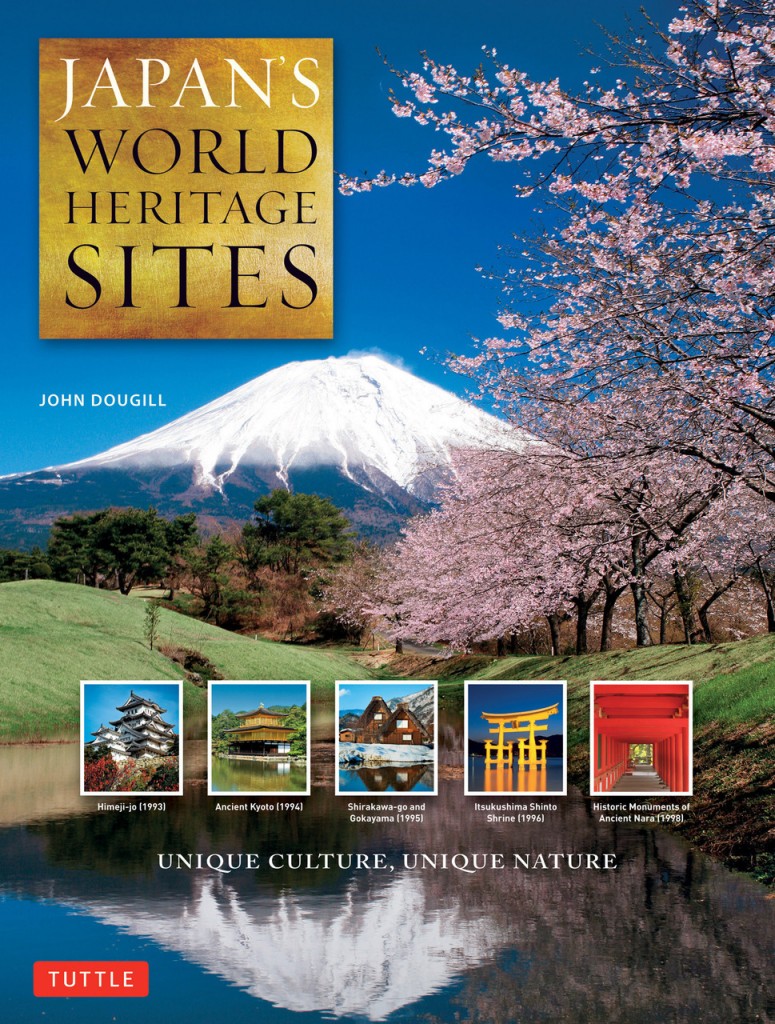
Today is the official release date of my latest publication, Japan’s World Heritage Sites. It’s a large-format, richly illustrated book with over 150 of my own photos together with some gorgeous selections from photo libraries. It involved travelling the length of Japan, from Shiretoko Peninsula in Hokkaido down to the Ryukyu ruins of Okinawa and the isolated islands of Ogasawara.
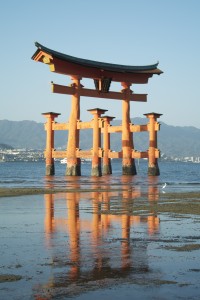
The famous torii of Itsukushima, Japan’s prime shrine in World Heritage terms
Along the way I learnt a lot about World Heritage sites, and I also discovered that there were far more Shinto shrines listed than anyone appeared to know about. This has to do with the curious nature of World Heritage designations. Take Kyoto for instance, which is officially recorded with Unesco as ‘Historic Monuments of Ancient Kyoto (Kyoto, Uji and Otsu Cities)’. Within that single World Heritage site are 17 different properties, including 13 Buddhist temples, 3 Shinto shrines and 1 castle.
Take Fuji as another example. Most people presume that it’s simply the mountain that is listed as a World Heritage site. However, as well as the summit, there are 24 other listed properties, including no fewer than 8 shrines.
Now here’s the curious thing: each of the components in a Unesco designation seem able to call themselves a World Heritage site. it’s a source of confusion, which is compounded in the case of Kii Peninsula where things get even more complicated. The designation covers three separate regions – Kumano, Mt Koya and Yoshino-Omine – and each of the regions has listed properties including long-distance pathways. And along the pathways there are a number of listed items, which might be something as simple as a wayside shrine. Technically these are part of the larger World Heritage site, though in practice placards often declare them to be a World Heritage site.
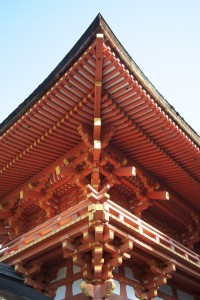
Roof detail of Kamigamo Shrine in Kyoto
To celebrate publication of my book, I’ve therefore decided to compile a listing of World Heritage registered shrines, showing their status within the Unesco sites. As far as I know, this is the first comprehensive listing of its kind – the ranking is my own idea.
The list begins with the only shrine to be registered as a World Heritage site in its own right – Itsukushima Jinja – which must surely stand in a rank of its own. There then follow independent shrines that are part of a larger site. After that come shrines that are part of an area within a larger site. Finally there are a number of unmanned shrines within temple complexes which are listed as part of the Unesco registration. I’m still uncertain about the names and number of these; further research needs to be done!!
Total: 30 World Heritage independent shrines (plus several temple shrines as yet unnamed)
First rank (2 shrines)
Itsukushima Jinja
Munakata Taisha (Okinoshima)
Second rank (16 shines)
Fujisan Hongu Sengen Taisha, Yamamiya Sengen Jinja, Murayama Sengen Jinja, Suyama Sengen Jinja, Fuji Sengen Jinja, Kitaguchi Hongu, Fuji Sengen Jinja, Fuji Omuro Sengen Jinja (all part of the Fuji World Heritage Site)
Futarasan Jinja and Tosho-gu (part of the Nikko World Heritage Site)
Kamigamo Jinja, Shimogamo Jinja, Ujigami Jinja (part of the Ancient Kyoto World Heritage Site)
Kasuga Taisha (part of the Ancient Nara World Heritage Site)
Seifa Utaki (Ryukyu shrine, part of the Okinawa World Heritage Site)
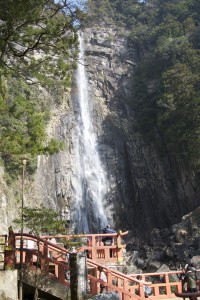
Nachi waterfall that is the revered object of worship at Nachi Taisha
Third rank (11 shrines)
Kumano Nachi Taisha, Kumano Hongu Taisha, Kumano Hayatama Shrines, Asuka Shrine (part of the Kumano area in the Kii Peninsula site)
Yoshimizu Shrine, Yoshino Mikumari Shrine, Kinpu Shrine, Tamaki Shrine (part of the Yoshino-Omine area in the Kii Peninsula site)
Niukanshofu Jinja and Niutsuhime Shrine (part of Mt Koya in the Kii Peninsula site)
Jisshu-in (part of the Kiyomizu complex in the Ancient Kyoto site)
Ebisu Jinja (disused: part of Okidomari Port in the Iwami Ginzan site)
Fourth rank (shrines within Buddhist temples)
Kusho Myojin Jinja (listed part of Ninna-ji in the Ancient Kyoto site)
Benten Shrine (listed part of Daigo-ji in the Ancient Kyoto site)
Shrines listed as part of Enryaku-ji in the Ancient Kyoto site
Shrine listed as part of To-ji in the Ancient Kyoto site
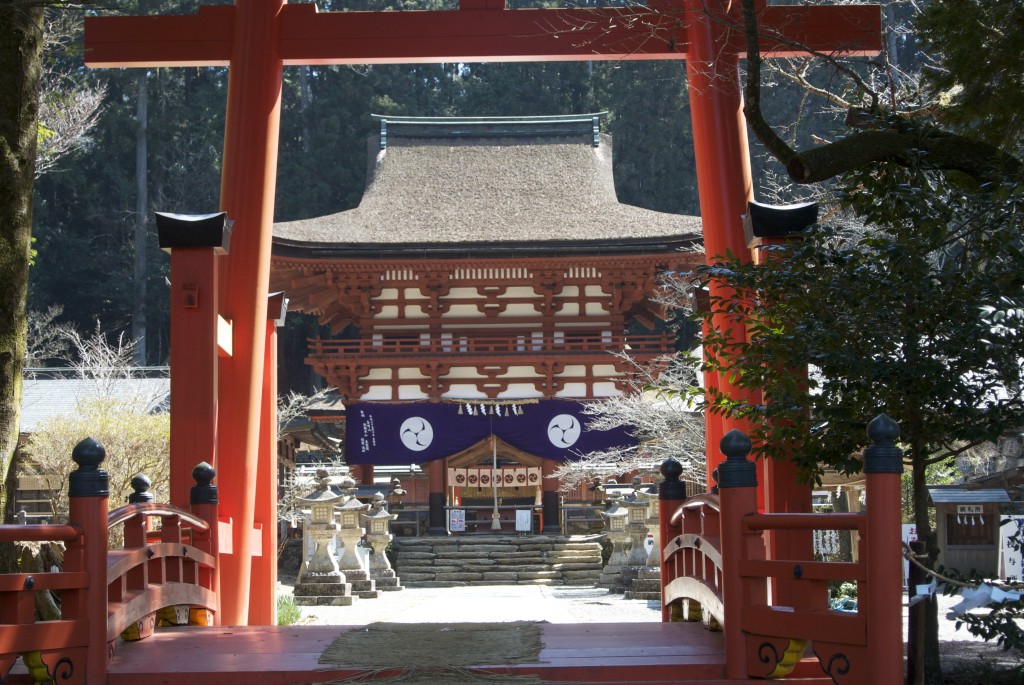
Niutsuhime Shrine, part of Koyasan in the Kii Peninsula World Heritage site
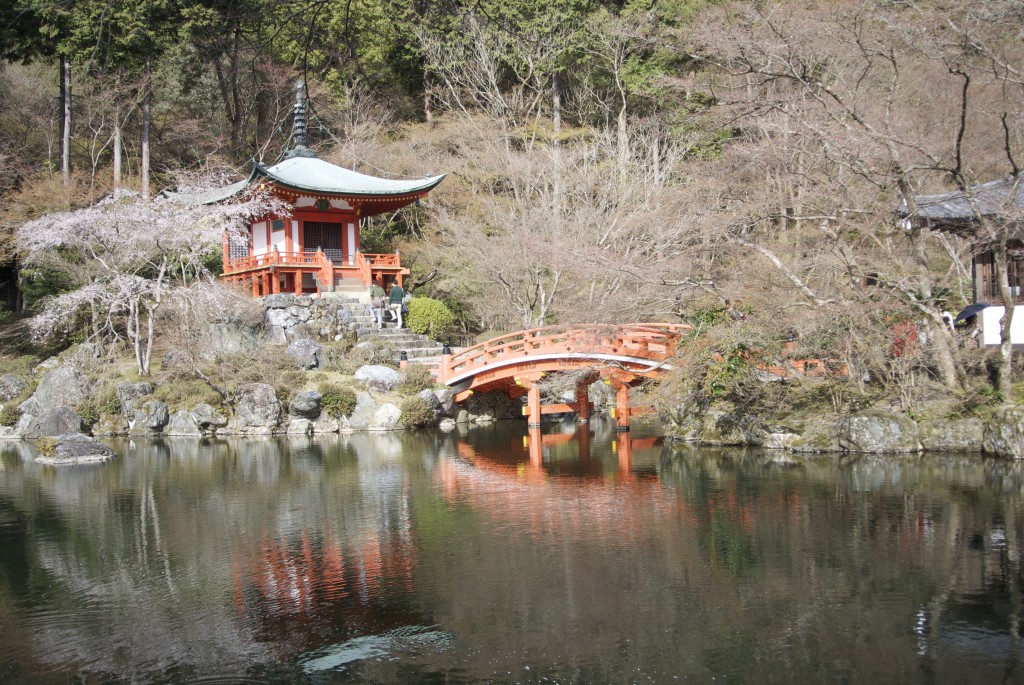
The Benten Shrine that is an integral part of the Shingon temple of Daigo-ji
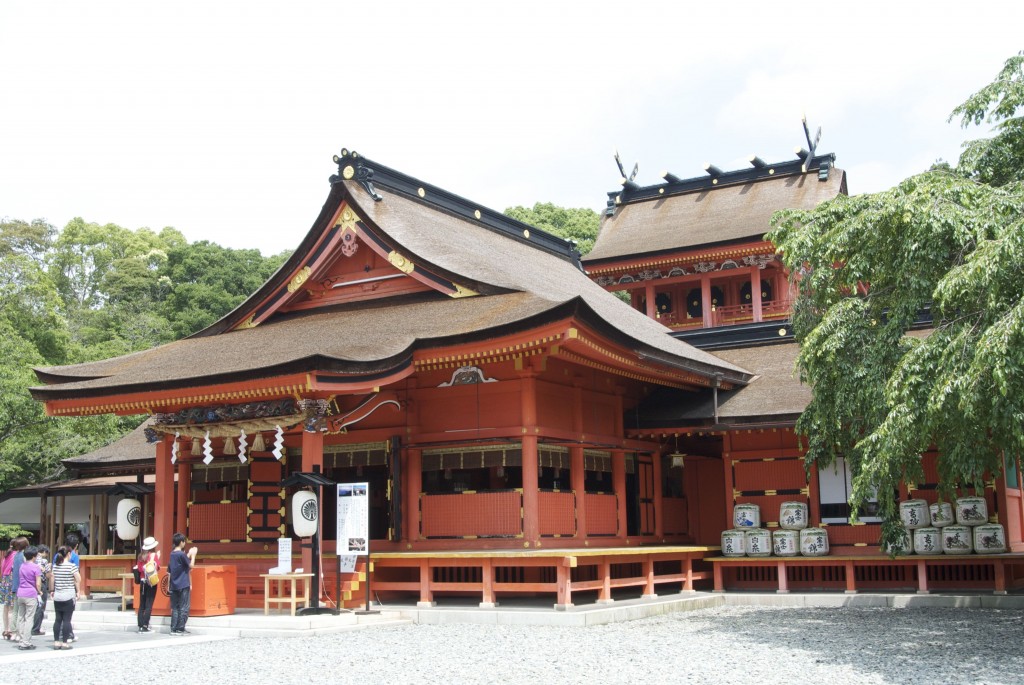
Fujisan Hongu Sengen Taisha, a vital part of the Fuji World Heritage Site
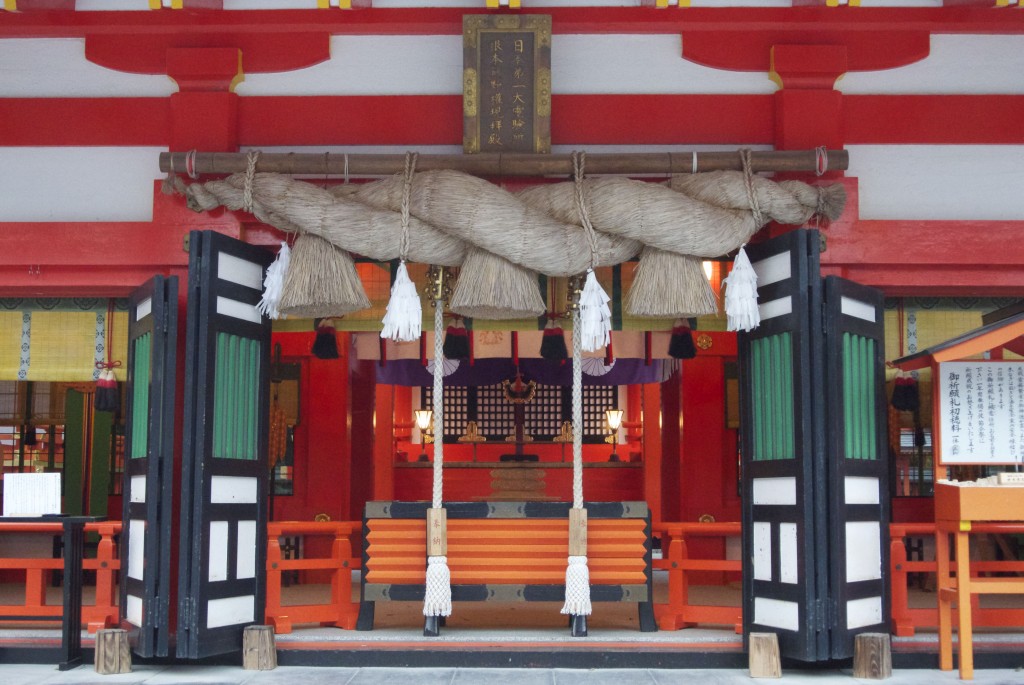
The dazzling frontage of Kumano Hayatama, part of the Kii Peninsula site

Congratulations John. My copy of the World Heritage book arrived in Tasmania in the mail this morning (July 2nd). It looks wonderful. The numerous images in full colour really bring the World Heritage sites alive and the text will introduce a wide audience to the diverse and fascinating elements of Japan. Your listing and ranking of the Shrines associated with the sites adds another dimension. Now my list of the places that I would still like to visit in Japan has just got longer!
Very kind of you, Jann. Appreciate your input, and it will be good to see you in Japan again…
How awesome! What a beautiful book. I’m going to have to pick up a physical copy of this one. Hope you’ll have a few at your book launch. :)
Thanks, Alex. Book launch on July 11, 6.30-8.00 at Tadg’s Restaurant. You and any other Green Shinto readers welcome!
Congratulations Lord Dougill……of course I will purchase it, and the next time I visit Kyoto, I will want to get it signed by the author…
Excellent, Mark! And if you’d care to do an amazon review for me, I’ll be buying you more than a round on your next Kyoto trip.
Perhaps a milestone ? It looks like a great book to have! Congratulations and success with the launch!